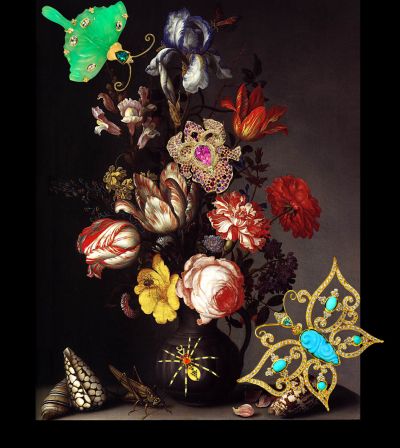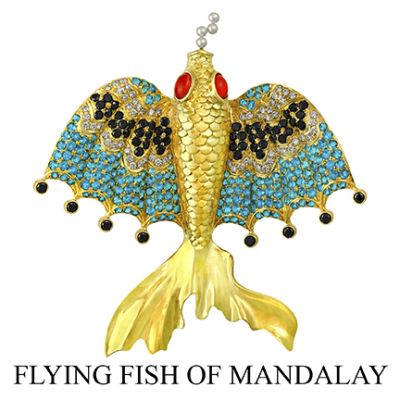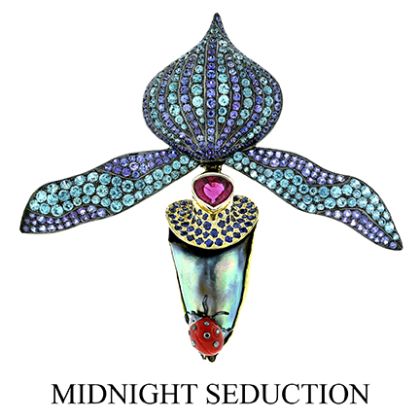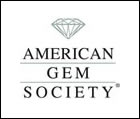A light and informative lecture on “The Power of Color”.
We will learn about how ancient languages had only a few words for colors and what they were and what the symbolic powers and meanings of colors were in our ancestor’s cultures.
Crevoshay will also speak about modern associations with colors and touch on what research has taught us about color usage. In addition to the primary colors this engaging talk by the “Queen of Color” will be illustrated with examples of how she uses the secondary and tertiary colors as well in the amazing color combinations for which she is so justly famous.

A lecture discussing the similarities between the Baroque Period and Modern Times
The Baroque period (1600-1750) was a time of social upheaval, dramatically increasing world trade, and rapidly growing wealth that gave rise to new forms of artistic expression.
All facets of art, including architecture, fashion, and jewelry were affected. In her delightful illustrated talk Ms. Crevoshay takes us through these developments with special emphasis on jewelry and draws parallels with our own time.

From the ancient civilizations of Mesopotamia, Egypt, Greece, Rome and beyond; Ms. Crevoshay will take you through the journey of the art of the evolution of goldsmithing from 3000 B.C. to present day.

The colors of our lives can be assigned an appropriate season when they most closely mirror nature and the human experience.
Most colors can be found in many seasons beyond their predominant one. The seasons have an essential spirit that we can harmonize with, reflect and enjoy.

What is the difference between accumulating and collecting? Certainly there is nothing wrong with any of us buying things we like. But conscious collecting demands a greater degree of involvement.
Collecting is not just price and attraction, but learning about artists, materials and techniques, along with the social and economic context in which the work is produced. The payoff is a richness of enjoyment that extends deeply into the subject matter. In many respects, it’s the difference between superficial enjoyment and substantial engagement.
While collecting jewelry opens windows on both social and natural history, concentrating on contemporary jewelry extends the role from voyeur to active participant. In the contemporary realm, the buyer becomes part of the artistic process. Like an editor, a collector of contemporary art can influence the here and now.
There was a time when jewelry was among the finest of the fine arts. Witness the letter Michelangelo sent to a friend complaining about his troubles working on the Sistine Chapel: “I’m a jeweler, not a painter.”
Like Michelangelo, I was formally trained in the fine art disciplines. Unlike Michelangelo, I am a painter, not a jeweler. Early in my career, my focus was painting and sculpture. It was only later that I started to apply fine art principles to jewelry, using gemstones as my palette.
I have made it my life’s goal to re-establish jewelry as a fine art discipline. That is why I have resisted the call of the easy money in mass-produced jewelry. I only make one-of-a-kind jewels because original art is always worth more than a copy or a print. I also think that it is important to our culture to use ancient labor-intensive techniques like granulation, piercing and hand engraving so the skills aren’t lost.

Website Powered by NorthernLogics Web Design.



